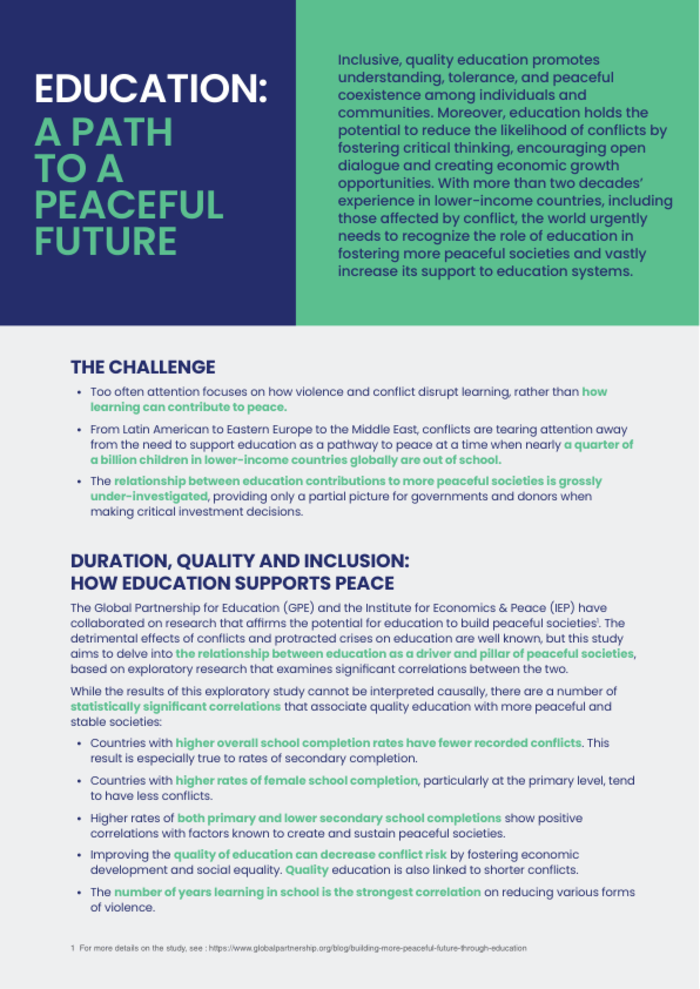Comprehensive and quality education promotes understanding, tolerance and peaceful coexistence among individuals and communities. Moreover, education has the potential to reduce the potential for conflict by promoting critical thinking, encouraging open dialogue, and creating opportunities for economic growth. With more than two decades of experience in low-income countries, including conflict-affected countries, the world urgently needs to recognize the role of education in promoting more peaceful societies and significantly increase its support for education systems..
the challenge
• Too often attention focuses on how violence and conflict disrupt the learning process, rather than on how learning contributes to peace.
• From Latin America to Eastern Europe to the Middle East, conflicts are diverting attention away from the need to support education as a path to peace at a time when nearly a quarter of a billion children in low-income countries globally are out of school.
• The relationship between education’s contributions to more peaceful societies has been little researched, providing only a partial picture for governments and donors when making critical investment decisions.
Duration, quality and comprehensiveness:
How education supports peace
The Global Partnership for Education (GPE) and the Institute for Economics and Peace (IEP) have collaborated on research that underscores the potential of education to build peaceful societies. The harmful effects of conflict and protracted crises on education are well known, but this study aims to delve into the relationship between education as a driver and pillar of peaceful societies, based on exploratory research examining important connections between the two.
While the results of this exploratory study cannot be interpreted causally, there are a number of statistically significant associations linking good education to more peaceful and stable societies:
• Countries with higher rates of school completion generally have fewer recorded conflicts. This finding applies particularly to high school completion rates.
• Countries with higher female school completion rates, especially at the primary level, tend to have fewer conflicts.
• Higher rates of primary and middle school completion show positive associations with factors known to create and maintain peaceful societies.
• Improving the quality of education can reduce the risk of conflict by promoting economic development and social equality. Good education is also associated with shorter conflicts.
• The number of years of education in school is the strongest correlation in reducing various forms of violence.
Education and ways of peace
East Timor has moved from conflict to stability, culminating in the withdrawal of UN peacekeepers in late 2012, successful elections and a peaceful transfer of power, most recently in 2022. At the same time, lower secondary school completion rates have risen dramatically from 67 % (2010-2015). ) to 91% (2017-2022). This progress, supported by more than $32 million from the Global Partnership for Education since 2006, indicates a parallel between educational progress and peace stability.
Nepal approved a new constitution in 2015, creating a democratic system after a civil war between 1996 and 2000. Over the past two decades, Nepal has more than doubled per capita education spending, with a focus on improving learning outcomes and equitable access. In parallel with improved high school completion rates, Nepal has moved up 30 places in global peace rankings since 2008, driven by a decline in the intensity of internal conflict. Investments in education, including $236 million in Global Partnership for Education support since 2009, have likely contributed to the gradual improvement of peace in Nepal over time. At the same time as the country's high school completion rates more than doubled, Nepal saw its Persistent Conflict score on the Global Peace Index improve by 15.3%.

